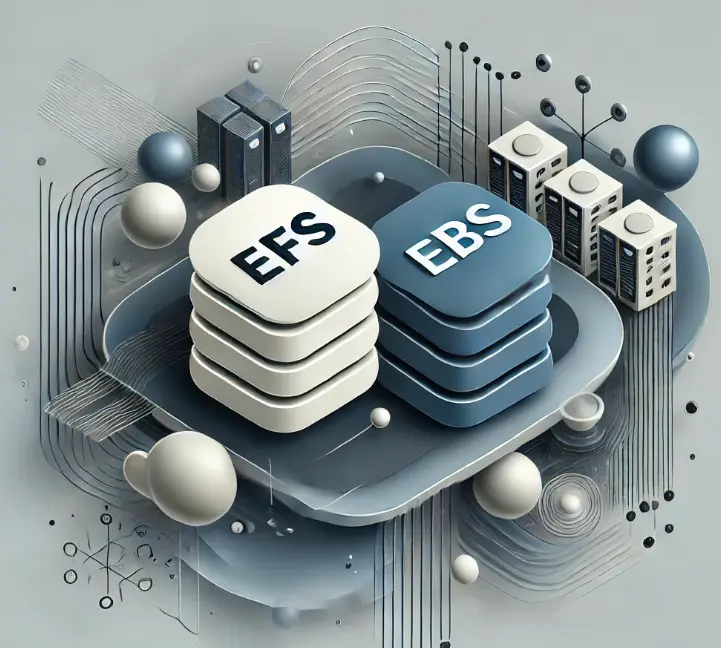Simple Guide: What’s the Difference Between EBS and EFS in AWS?
When you create a server (instance) in AWS, you need to decide what type of storage to use. Think of it like choosing between a personal hard drive (EBS) and a shared network drive (EFS). Let’s break down both options in simple terms.
EBS (Elastic Block Storage) - The Personal Hard Drive
- One server only: Like your laptop’s hard drive, EBS can only connect to one server at a time
- Location matters: It can only be used by servers in the same area (what AWS calls an “Availability Zone”)
- Moving is tricky: If you want to move your EBS to a different area:
- You need to take a “snapshot” (like a backup)
- Restore it in the new location
- Your server needs to be turned off during this process
- Cost-effective: Generally cheaper than EFS
- Works with all types: Can be used with both Windows and Linux servers
[Simple EBS Diagram]
┌──────────┐
│ Server │────► EBS Volume
└──────────┘ (Can only attach
to one server)
EFS (Elastic File Storage) - The Shared Network Drive
- Share with everyone: Multiple servers can use the same EFS at the same time
- Location flexible: Works across different areas in AWS
- Great for sharing: Perfect for website files that need to be shared across multiple servers
- More expensive: Costs more than EBS but offers more flexibility
- Linux only: Only works with Linux servers, not Windows
[Simple EFS Diagram]
┌──────────┐
│ Server 1 │──┐
└──────────┘ │
├────► EFS Storage
┌──────────┐ │ (Can be used by
│ Server 2 │──┘ multiple servers)
└──────────┘
When Should You Use Each One?
Use EBS when:
- You have just one server
- You don’t need to share files between servers
- You want to save money
- You’re using Windows
Use EFS when:
- You need multiple servers to access the same files
- You’re running a website across multiple servers
- You need to share files between different areas
- You’re only using Linux servers
Real-World Example
Imagine you’re setting up a photo storage system:
- EBS is like having a personal photo album that only you can access
- EFS is like having a shared family photo album that everyone can access and update at the same time
Cost Tip
Start with EBS if you’re unsure - it’s cheaper and simpler. You can always switch to EFS later if you need to share files between multiple servers.
I hope this simple explanation helps you understand the difference between EBS and EFS! Remember, there’s no wrong choice - it all depends on what you’re trying to do.
